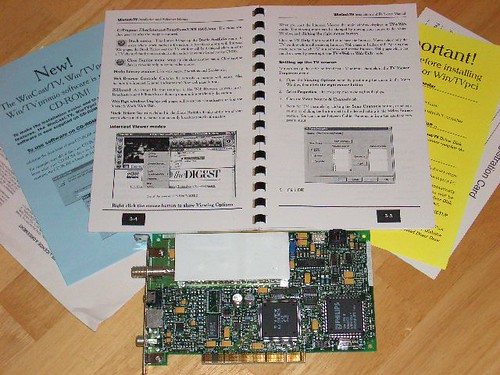
Since the Intel Intercast boards of 1995 I have been fascinated with the convergence of PCs and Television sets. This path, however takes two routes which I have been known to call push and pull. Windows 95 brought TV tuner cards (that actually worked) to the den and WebTV boxes, now called MSN TV, extended PC like functions to living room. Both of these examples are a pull or consuming activity. My Apple computers and now with the stability of XP, my Windows machines let me manipulate and encode digital video from photo and movie cameras, recorded media or live TV. My TiVo content can now live on my huge PC hard drives and be further compressed to resolutions and compression rates more suited to portable devices. Services like Google Video will host my old television shows and even let me charge for them if I wish - ala iTunes. The problem at hand is Digital Rights Management or that bad three letter word that techies call DRM. Now I understand what it costs to produce content. I'm a writer, producer and content creator by trade. I get paid for disseminating what is in my head and putting it in the media. However, I believe as the content becomes available to more people in an easy manner, it gains value. Just as the original swapping of bootleg concert tapes, and now MP3 files help build fan communities for new and established bands, I hope that media content can be aggregated and live on in the new world of TelePixels. Whether it is to extend brand or reach, or become a click and view micro-payment model. The days of the network are dying. I do not watch networks. I watch shows. Networks are ineffecient, difficult to navigate and slow. It is time to trim the fat. This blog will investigate the world of TelePixels, or multimedia content on personal electronics.

No comments:
Post a Comment